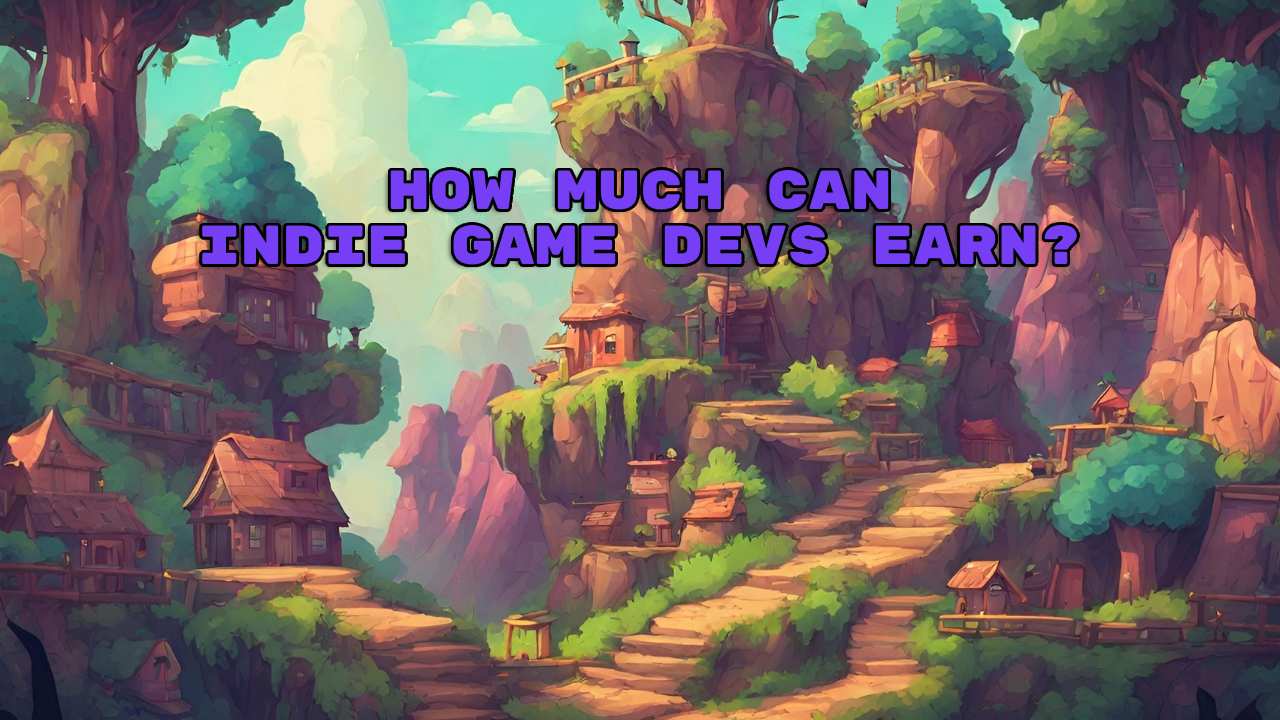Indie games are increasingly consolidating their position in the gaming industry. As a result, there is no surprise that many indie game developers have aspired to earn massive rewards for their creations.
However, it is essential for us to capture the potential earnings for indie developers. Can we genuinely earn large amounts of dollars if we enter the world of indie game publishing?
Actually, the answers rely on numerous factors, and there is no guaranteed promise for income stability.
In this article, we will provide you with a comprehensive view of the potential earnings of indie game development, as well as break down all influencing factors so that you can have clear insights into them.
Historical Context
Indie games have developed constantly from their humble beginning.
Space War pioneered indie game development with its first release in 1963. However, there are still some debates about which is the first indie game.
No longer after that time, in the 1980s, personal computers became more and more popular, leading people to make their own games.

This was relatively easy then because people could find source code for making games in computer magazines. An outstanding example during this time should be mentioned is Football Manager, which Kevin Tom developed in his bedroom.
However, the selling tasks became challenging because it was easy for everyone to make their own games.
To overcome this, indie game developers started giving away part of their games in magazines, and then, if players were interested in the indie games, they had to pay money for the full version. That said, this was the initial way for indie game developers to get noticed and earn money.
The Beginning of Shareware
Shareware was a popular way to distribute independent games at that time, especially after the success of the game Doom.
Then, in the mid-2000s, the advent of digital distribution platforms like Steam, Xbox, and PlayStation allowed indie game developers to have digital storefronts to expose and sell their creations to global audiences.
When we think about indie game development, we can’t help but mention Minecraft’s tremendous success.
Developed by Markus Persson in 2009 and released in 2011, Minecraft introduced players to the world of imagination where everything is possible, such as building a simple house or an entire kingdom. Its robust crafting system allowed players to become their own architects of imagination.
Thus, with a significant player base, the game has gained over $80 million from over 5 million paid downloads.
To learn more about indie games definition, check out this “What is an Indie Game?” article.
Factors Influencing Earnings
When it comes to indie game development, various factors play an essential role in determining indie game developer’s earnings.
1. Game Quality and Appeal
We should emphasize the quality and appeal of the game first because they are the main factors to attract and retain players.
This does not mean the games have to obtain complex, realistic graphics as major games, but at least the indie games should look refined, engaging, and adapt to minimum standards.
For example, Kingdoms and Castles and Minecraft are famous for their simple graphics yet gain substantial fan bases and earnings from the gaming community.
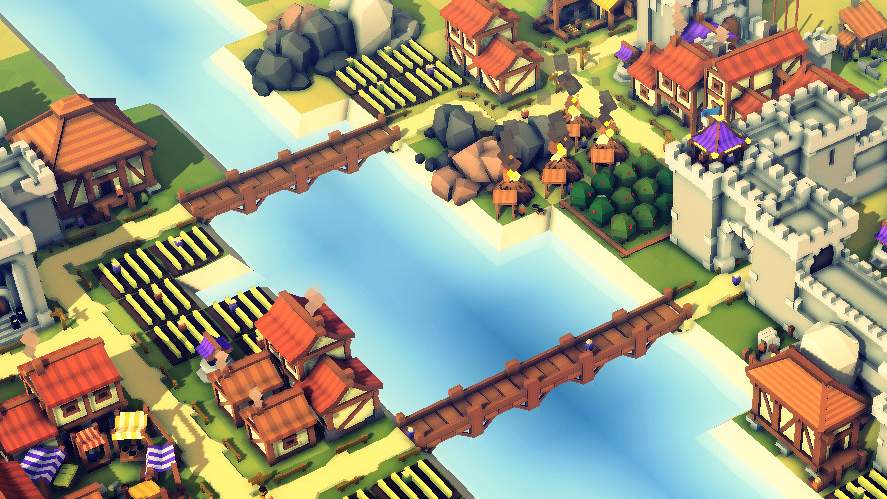
Also, many financially successful independent games feature compelling gameplay and stories, thus creating emotional connections with players and encouraging them to play more and more to explore upcoming themes.
It is vital for indie game developers to pay attention to reviews and feedback on platforms such as Steam or the App Store.
While there are comments from both sides, developers can use them as valuable insights to improve game quality, attract new players, and ultimately boost sales.
2. Marketing and Visibility
There is no doubt that marketing can affect the profitability of indie game publishing. If the games are excellent in quality but don’t have the opportunity to be visible to broad audiences, they cannot generate sales.
As a result, indie devs should implement marketing strategies such as influencer marketing, PR, and social media advertising to attract a wide range of engaged players and boost sales.
However, it is important to note that these marketing efforts often come with costs, so indie game developers must consider carefully and have solid financial planning to overcome potential challenges.
3. Platform and Distribution
There are various platforms for indie games to publish games to earn revenue; each has different earning potential and competitive intensity.
Platforms like Steam and Epic Games Store provide access to a vast player base, allowing indie game developers to publish their works in front of wide global audiences.
However, this also means high competition, so indie games must be high-quality and stand out among other titles. They need to pay $100 to publish the game on these platforms.

On the other hand, consoles such as Xbox, PlayStation, and Nintendo offer a different audience and the potential for higher pricing. But there is still lots of competition, and indie devs must follow procedures strictly to ensure games meet the platform’s standards.
Another option is the mobile gaming market. To succeed on this platform, indie game publishing must stand out or consider using ads to expose games to broaden players and make money.
It is crucial to keep in mind that there are fees and competition for each platform.
So, depending on targeted fan bases and strategies, indie devs carefully choose the right platform to maximize their chances of valuable earnings.
To learn more about game publishing and where to find publishers, check out this “Indie Game Publishers: How to Find the Perfect Fit for Your Game” article.
4. Game Pricing and Sales Strategy
When selling independent games, setting high prices and gaining sustainable profit is not simple. Otherwise, it requires careful consideration and detailed strategies.
First, indie game companies or developers need to understand who the targeted audiences are and how much they are willing to pay for the game so they can tailor the price to meet player’s expectations.
Second, comparing similar competitors’ games on platforms and marketplaces gives indie game developers valuable insights about pricing models, game features, and ratings so that they can adjust the game price accordingly.
Last, developers must carefully consider costs and goals as they directly affect their earnings. Indie devs must set their break-even point and return on investment (ROI), then use them to set goals for the game sales and optimize the game pricing.
Notably, the timing of sales events and discounts are also great ways to encourage potential players to be willing to pay for the new games.
Similarly, creating bundles of games at lower prices provides another compelling option for customers to purchase at more affordable rates.
5. Post-launch Updates and DLCs
To maximize earnings through game self-publishing, indie game developers can optimize revenue streams by offering attractive downloadable content, expansions, and in-game purchases.
This way, they not only generate additional revenues but also keep players engaged in the indie games with new levels, features, characters, or storylines.
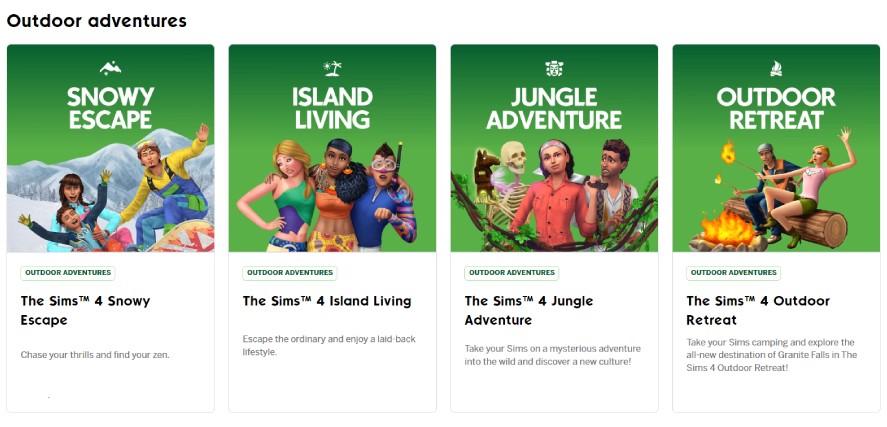
Additionally, regular updates and expansions can boost game longevity and sales as they maintain loyal users and attract new players.
Regular game updates are like giving a new fresh air. As developers fix errors and add new cool things, players will likely stick to the games and keep playing over periods.
All the efforts to take care and make the game better and better over time are worthwhile, leading to the growth of huge fan bases and increased earnings eventually.
To learn more about how to publish your indie game, check out this “Top 7 Ways to Successfully Publish Your Indie Game” article.
Earnings Models
Monetization is crucial in indie game development, so you should capture various earning models to choose the most effective strategy for indie games.
1. One-time Purchase
This traditional strategy offers players straightforward and transparent transactions – they pay once to download the entire game. This model works well for games that players want to play repeatedly or for titles with something special that makes them stand out among free games.
While this model has high earning potential because players have to pay upfront for the game, it also has the limitation of not providing a steady stream of long-term revenue.
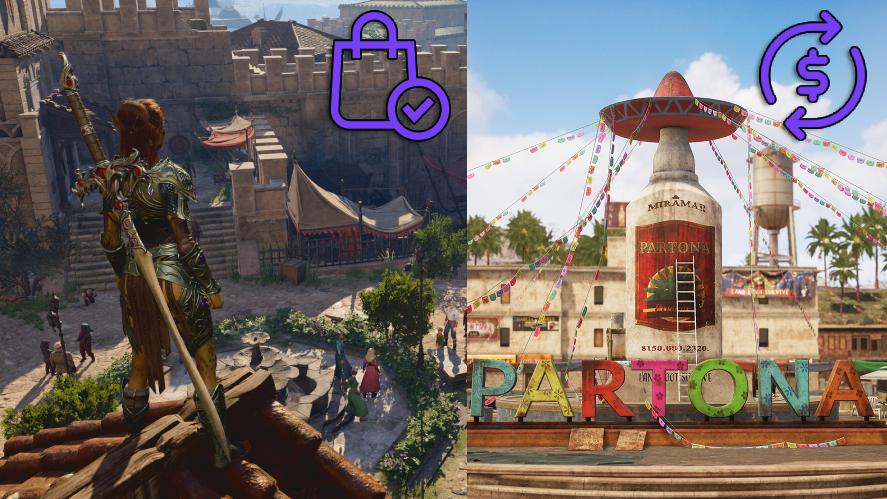
This limitation can be addressed by selling downloadable content, but it still depends on additional game releases, which require additional investment to develop.
The market for one-time purchase games is now highly competitive, with many options available.
In fact, the revenue that indie game developers can expect to earn from this model varies, depending on factors such as quality, marketing, and player engagement.
2. Subscription or Freemium
This is one of the most popular model models for indie games with regular content updates. Unlike one-time purchases, players must pay recurring fees for the games to access new features.
One popular approach is through in-app purchases. These indie games are free to start playing, but players can choose to purchase special items or access new features for a fee.
This way, game makers can earn money while allowing players to explore and try out new things.
Another approach is monthly subscriptions. This way requires players to pay a monthly recurring fee instead of one up-front fee at the beginning.
That said, subscriptions create a long-term stream of revenue, but they can be affected by buyer’s decisions. Players who don’t want to play games can easily cancel their subscriptions anytime.
We should mention Fortnite, Roblox, Minecraft, and Player Unknown’s Battlegrounds as successful examples of using this model. They have done well by allowing players to subscribe to consoles, computers, and mobile devices.
3. Crowdfunding and Early Access
This is a popular way for indie game developers to raise funds to develop their creations.
Platforms and indie game sites like Kickstarter and Patreon play important roles in supporting game self-publishing by pitching their game to potential backers who can support the project.
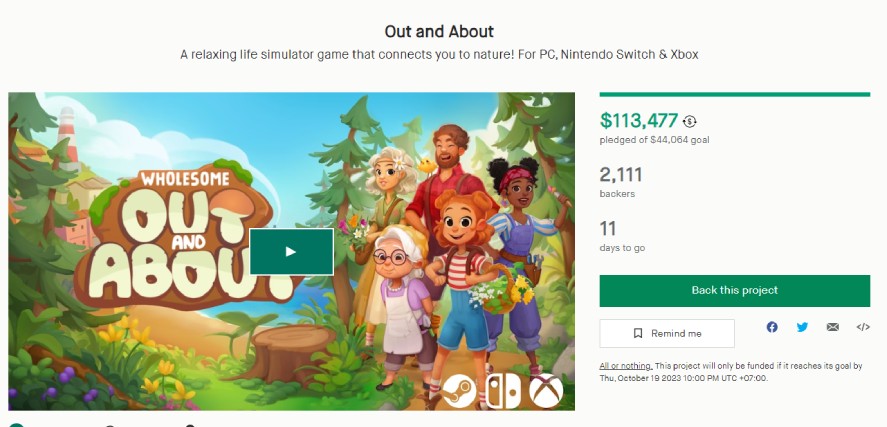
Similarly, Early Access is a program in which indie devs release their creations in the early stages for the public to purchase. When customers buy an Early Access game, they provide developers with funding and valuable player feedback.
While this model offers financial support from potential backers to developers, it also comes with challenges, such as uncertainty in meeting crowdfunding goals or not adapting to the player’s expectations in the early stages.
Real-life Case Studies
To help you with valuable insights into the actual earnings of indie game development, let’s explore some real-life case studies.
1. Swords N’ Magic and Stuff
This adventure game gained huge success from its beginning, resulting in a net of $71,855 in revenue in the first month of release. After that, the game continued to generate significant revenue through sales and in-game purchases.
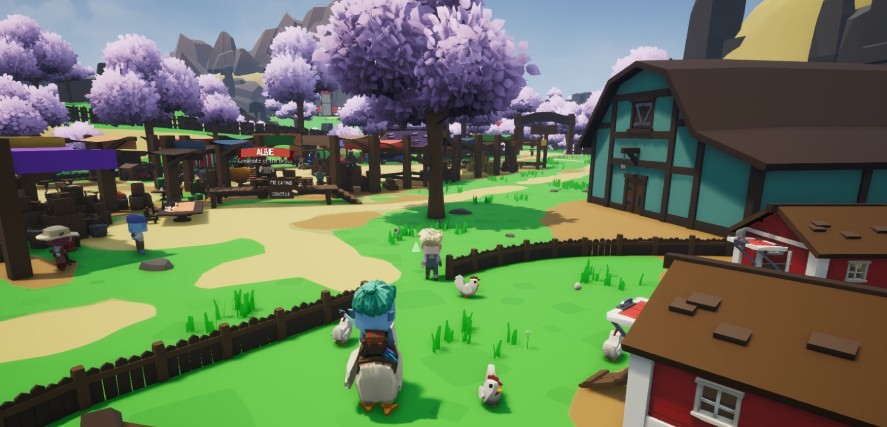
To gain this achievement, the creators had the right strategies for the game. They create a strong connection with the player community, post regular updates about the game, and gradually drive the viewers into a significant fan base.
2. Minecraft
Since its official release in 2011, Minecraft has gained popularity gradually and is now considered one of the most successful indie games of all time.
Minecraft has grown continuously until now. It generated $380 million in revenue in 2021 and will accumulate more earnings in the future.
Minecraft has become famous because it lets players build their own virtual worlds. This keeps players engaged in the game to explore new stuff and create whatever they want.
This game also offers a variety of monetization methods, including paid versions, in-game purchases, and merchandise.
As the game has consistently evolved over the years, it has offered players endless creativity and fun. Also, with the support of content creators and streamers, the game has continued to expand the player community.
Hidden Costs and Considerations
Developing indie games requires a lot of time, effort, and costs. Normally, developing an indie game can come with costs ranging from $10,000 to $1 million.
Besides obvious expenses, there are also hidden costs that can affect the overall budget. Here are some key costs that we provide you to keep in mind.
First, the costs involved in developing a game, including software, hardware, game royalties, and licenses. This is compulsory money you spend to bring your game idea to life.

These investments are prioritized as they determine the quality and functionality of the final creations. However, they also accumulate quickly, especially if you aim for high-quality production.
Additionally, after indie games hit the market, various costs arise to keep the games running smoothly and retain players.
These expenses include server maintenance to ensure no disruptions while players enjoy the game. In addition, the costs pay for customer support to resolve player inquiries quickly to bring the best user experience.
Most importantly, regular updates also play a vital role in keeping the game fresh, but they also come with substantial expenses.
While there are various costs, if you are an indie game developer, it is necessary to account for these hidden costs when calculating net earnings carefully.
By meticulously calculating these costs, you can set a starting point for how much to charge for games and ensure that game prices cover the initial investment.
Tips for Maximizing Earnings
If you’re an indie game developer, here are some simple and effective tips to help you earn more from your creations.
First, you should focus on effective marketing strategies as they can bring a huge fan base for long-term periods.
Depending on the targeted niche, you can create compelling trailers or run targeted advertising campaigns to attract potential users.
Also, partnering with influencers or streamers in the gaming industry to attract a larger player base.
It is also important to keep engaged in the gaming community to listen to players’s feedback and comments.
This way, you can use their valuable insights to improve gaming quality. Thus, you can retain existing players and attract new players by providing regular updates and events.
Last but not least, you should use data analytics to gain insights into player behavior. These data help you know how they play your games, what they enjoy most, and why they drop out of the indie games.
By capturing all these analytics, you can tailor your games to satisfy the majority of players and thereby increase revenue.
Conclusion
We can not deny that indie game development can bring various potential earnings, and indie game developers can regarded as a lucrative job.
However, it is important to remember that there is no guarantee for substantial income as it still depends on various factors such as game quality, market trends, consumer demands, and so on.
So, if you aspire to embark on an indie game development journey, ensure you are ready to confront challenges and uncertainties.
Remember that, besides a huge passion for game self-publishing, you should have the persistence to clarify a solid strategy to guide you to indie game success.
Keep making great games, and you can turn your dreams into reality!

